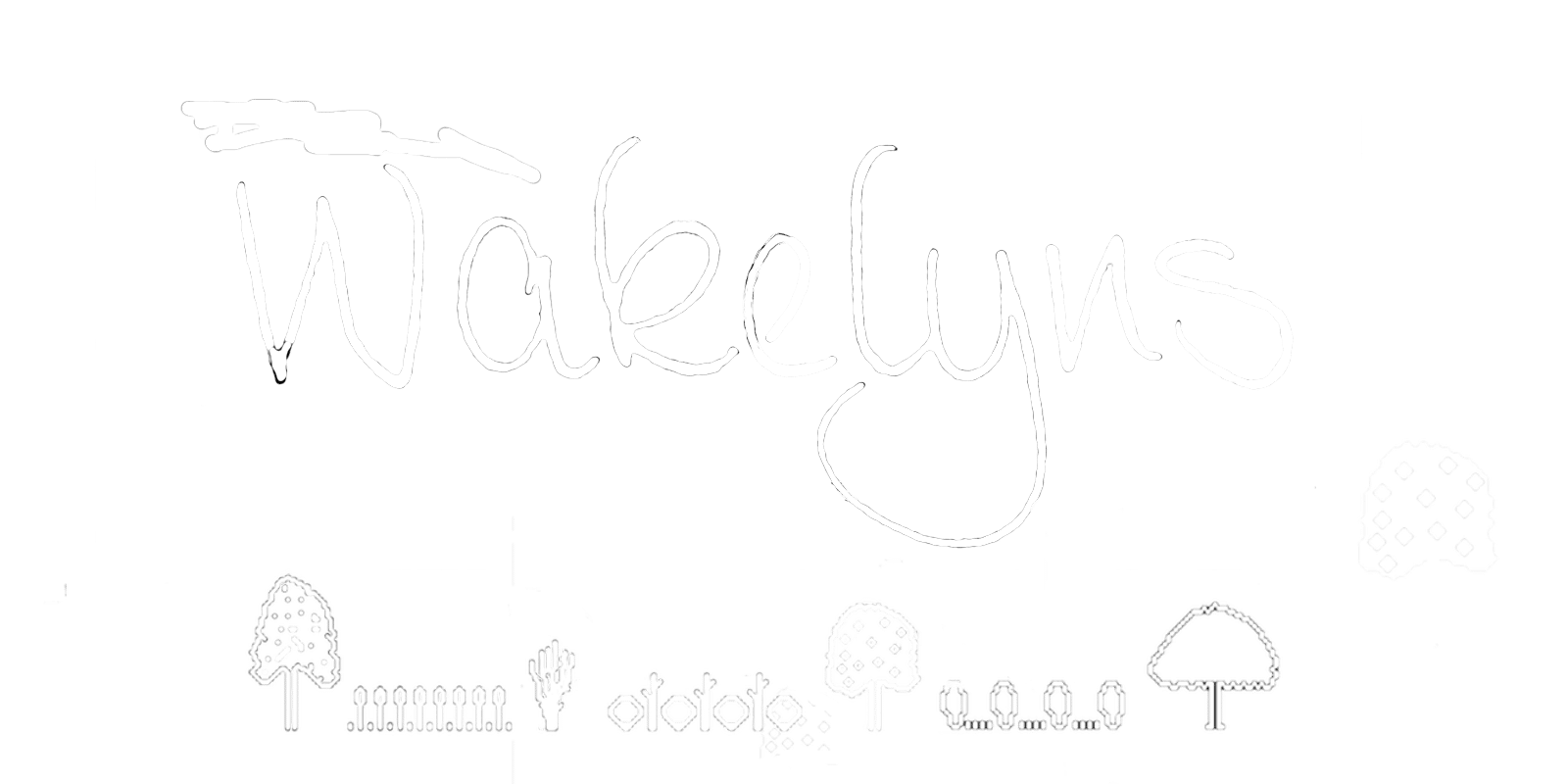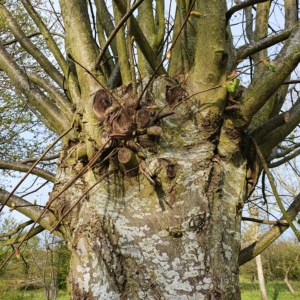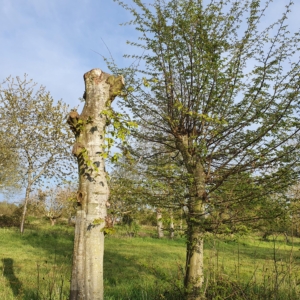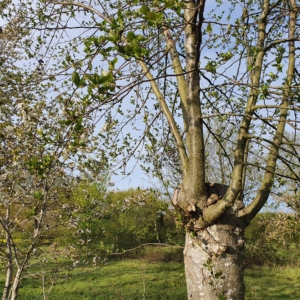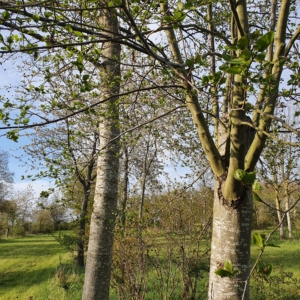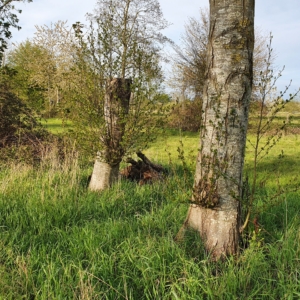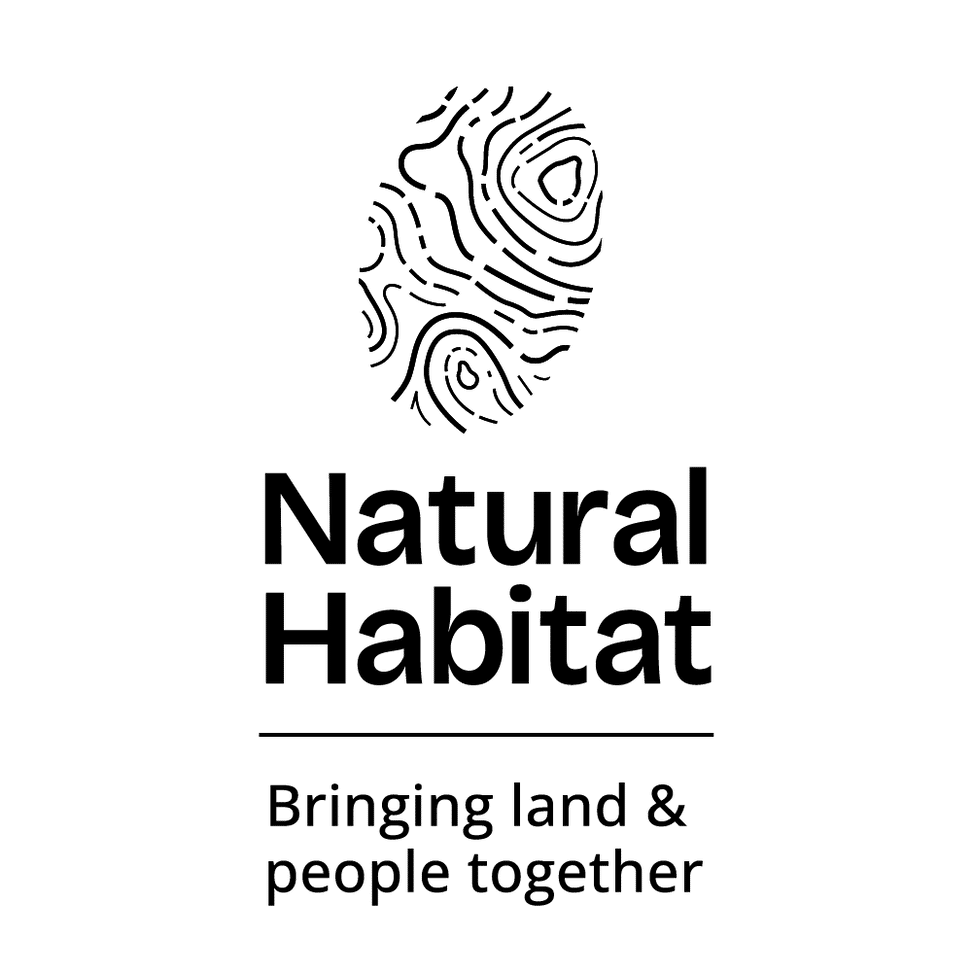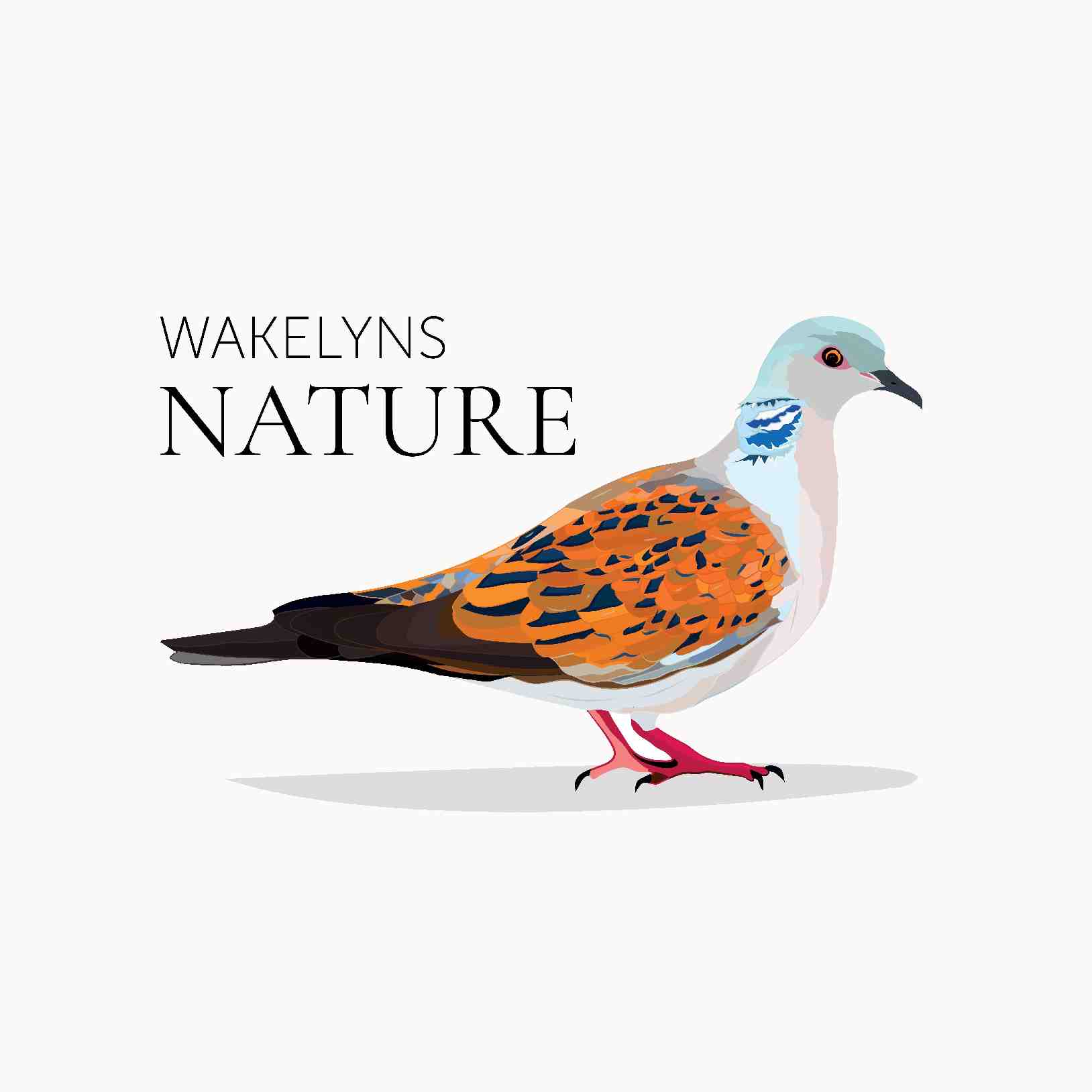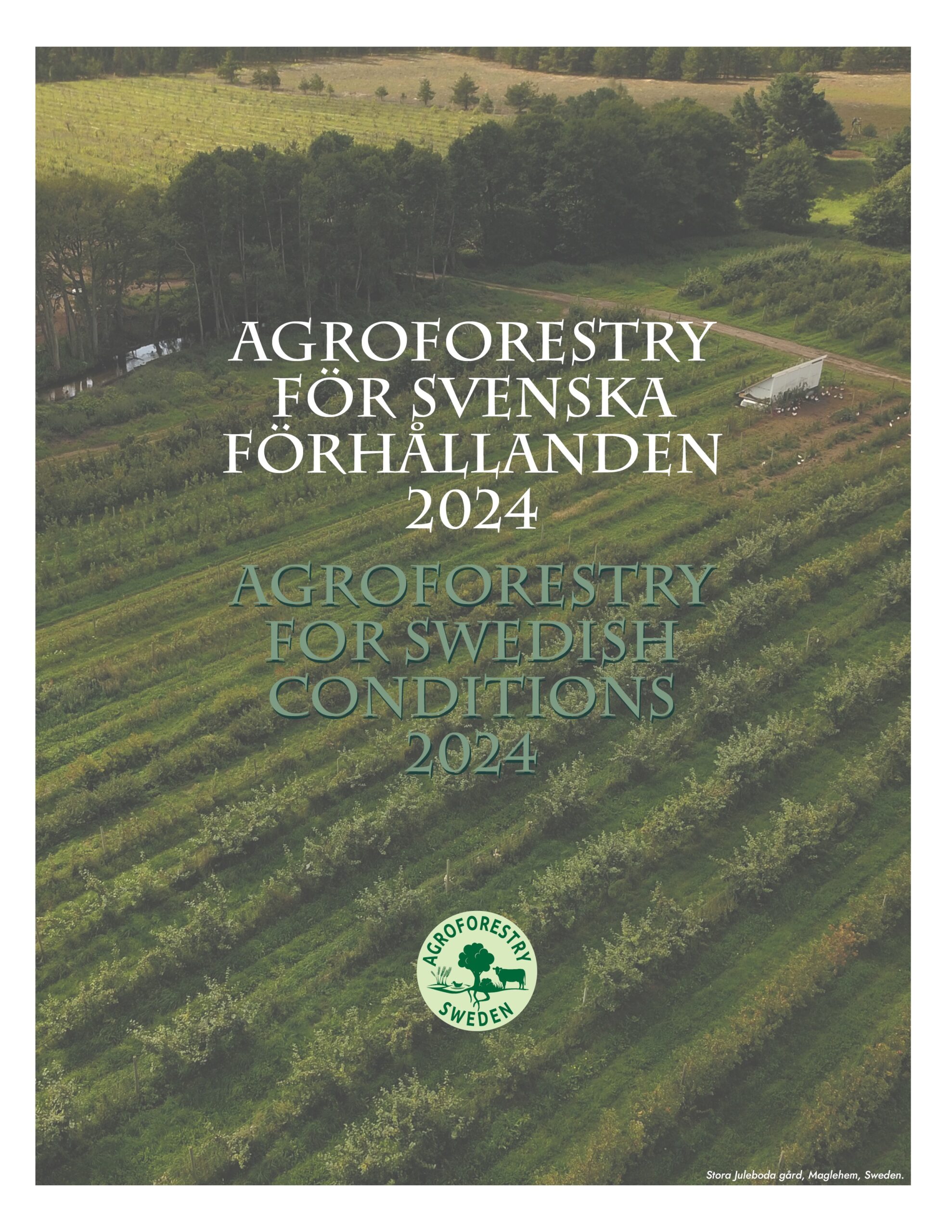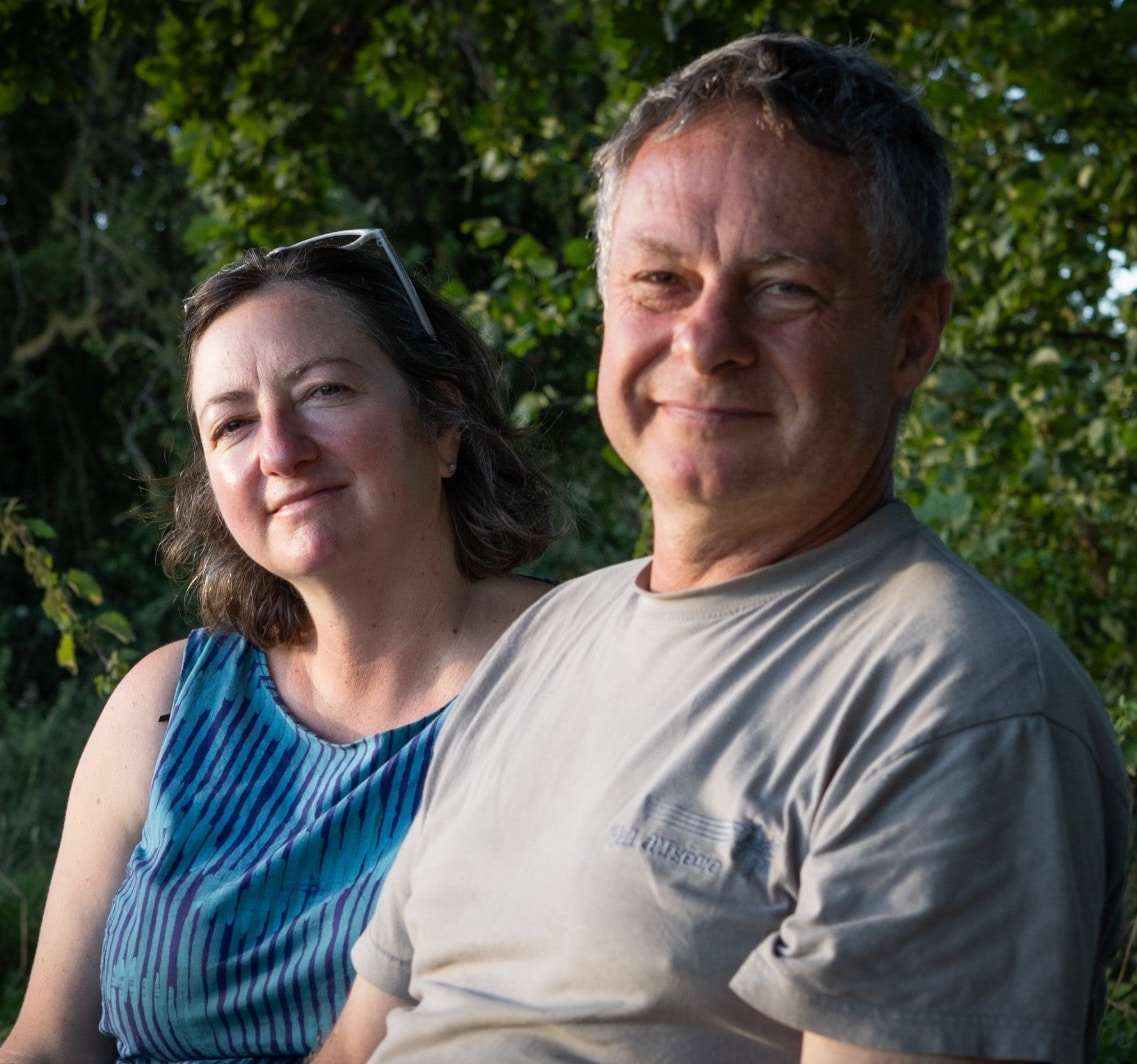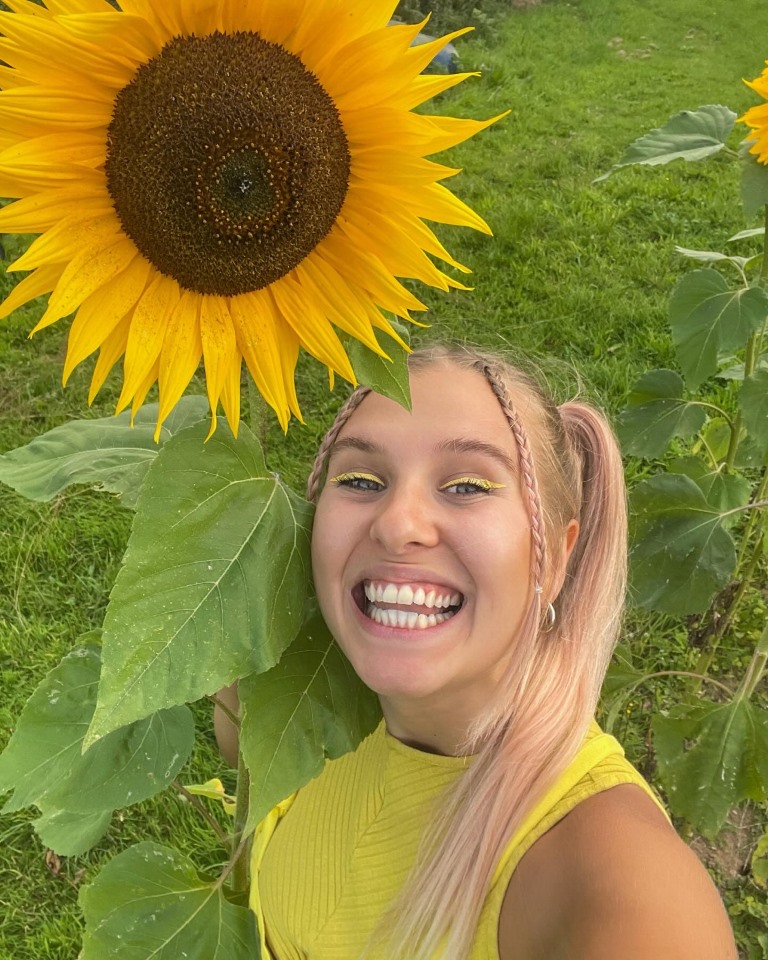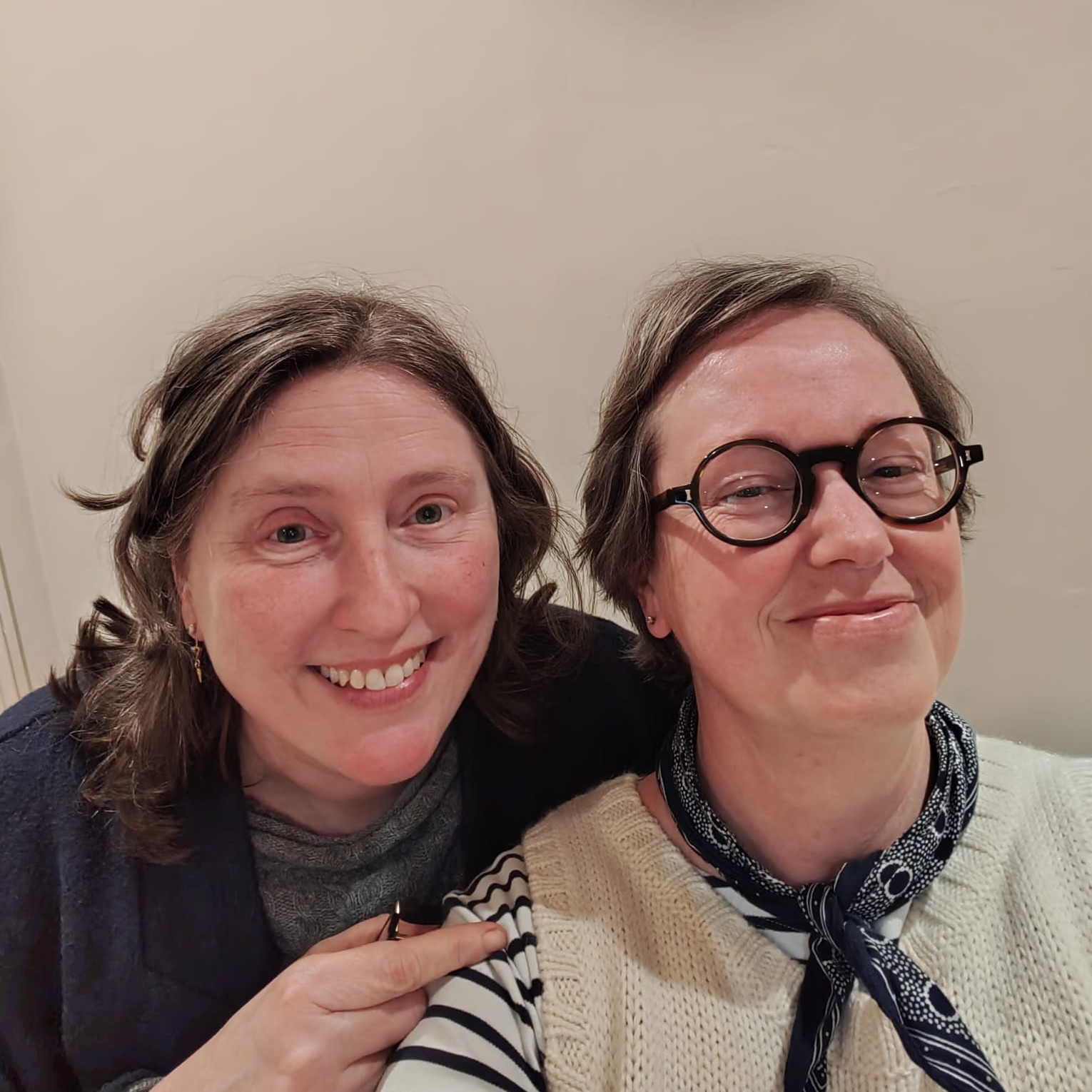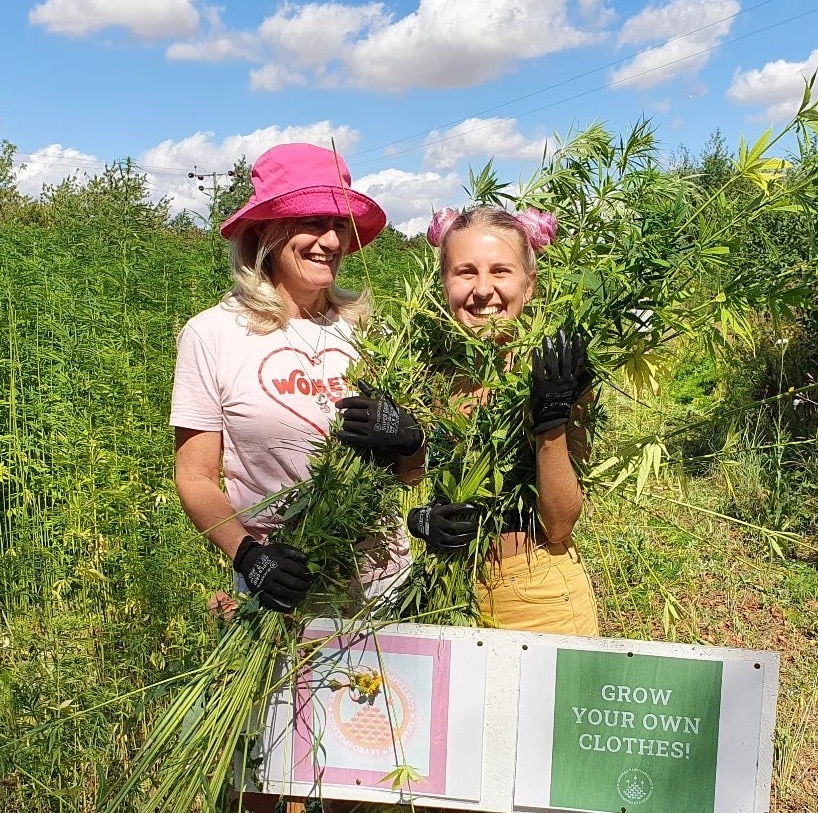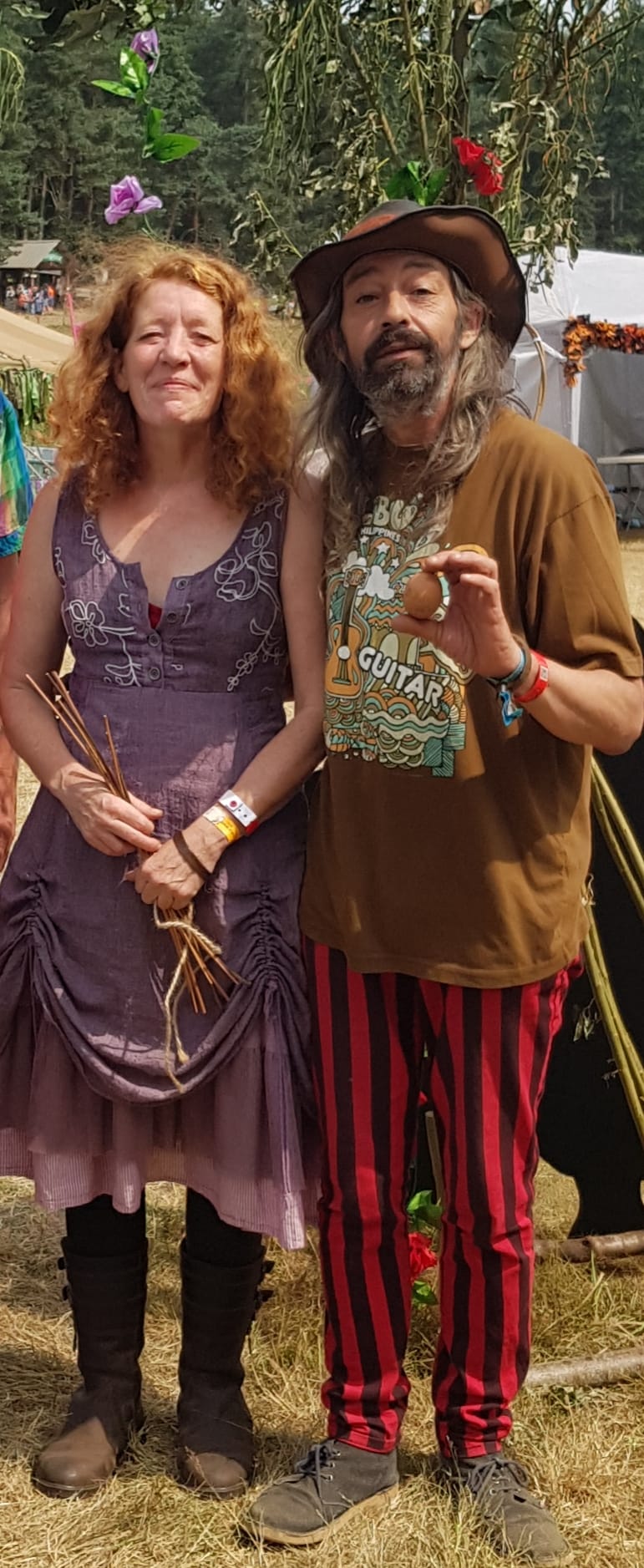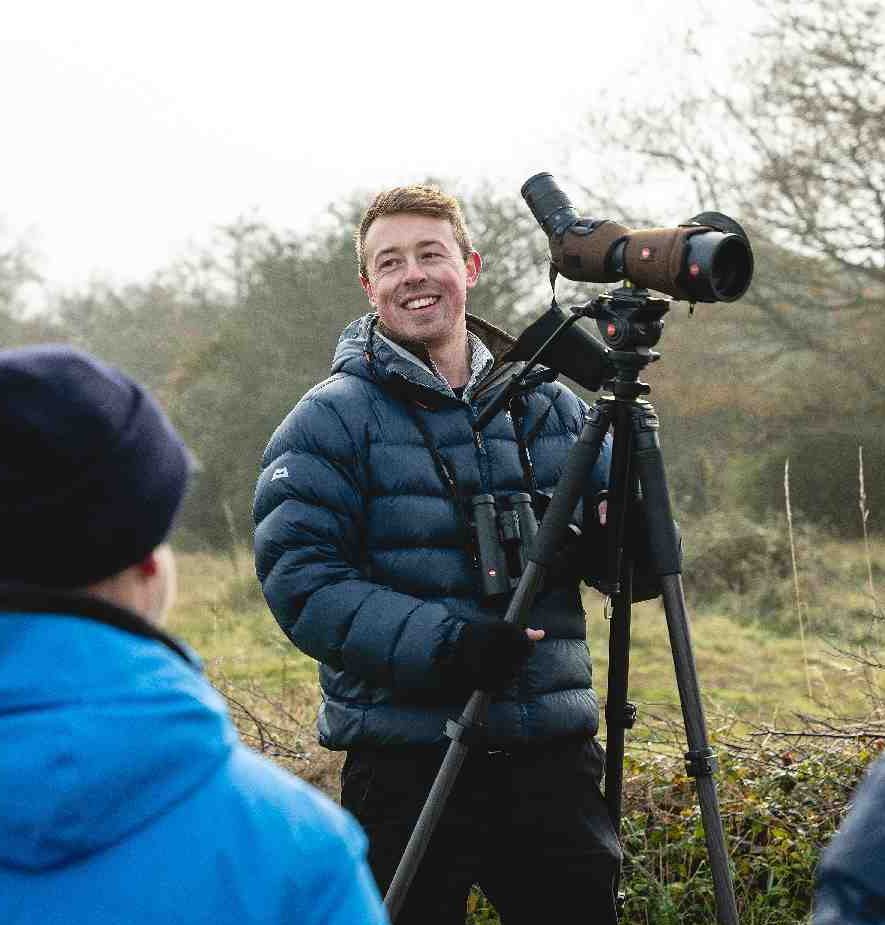The trees in front of you were planted in 1994.
This is what the field looked like before they were planted.

And here they are being planted.

They have been managed by pollarding, which helps to stimulate growth of biomass, particularly to assist with carbon sequestration, to keep crowns high (and therefore out of the way of the farm machinery used within the alleys), and to create a more diverse arboreal habitat for
birds and other wildlife.
After a few years when less was done, we are now playing ‘catch up’ so it can look a bit brutal.
Have a look at the way in which identical ‘twin’ pairs of trees – planted at the same time in 1994 – have grown, one pollarded every few years, its’ sibling not.
Our experience is that the pollarded tree puts on more biomass – and sequesters more carbon? – and is perhaps more resistant to disease.
Come on a Wakelyns Tree Walk to learn more about pollarding.
For more information generally about trees and what we do with them at Wakelyns fownload a copy of our “Woodland Management Plan” here.
